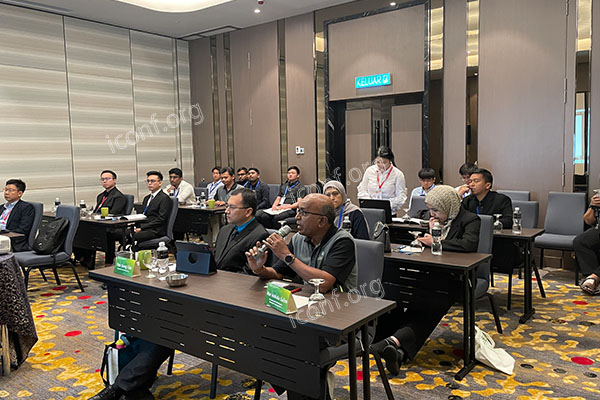In today’s digital era, ensuring robust security and protecting privacy are more critical than ever. Researchers in the fields of cybersecurity and privacy are continuously exploring innovative solutions to counter emerging threats and safeguard sensitive information. Responding to a Security & Privacy Call for Papers (CFP) is your opportunity to present breakthrough research, contribute to academic discourse, and influence the future of digital trust on a global scale.

Global Exposure and Recognition
International Visibility: Present your cutting-edge research to a worldwide audience of academics, industry experts, and policymakers.
Academic Impact: Enhance your professional profile and boost your citation metrics by publishing in high-impact conferences.
Driving Innovation in Cybersecurity and Privacy
Novel Solutions: Showcase innovative approaches in areas such as intrusion detection, encryption algorithms, secure network protocols, and privacy-preserving data analytics.
Real-World Applications: Demonstrate how your research addresses practical challenges in protecting digital assets, ensuring data privacy, and building secure communication systems.
Collaboration and Networking
Build Partnerships: Engage with leading experts and potential collaborators to foster interdisciplinary projects that bridge theory and practice.
Exchange Insights: Participate in vibrant discussions that drive further research and spark new ideas for future innovations.
1. Understand the CFP Guidelines
Detailed Review: Carefully examine the CFP document to ensure your research aligns with the conference’s themes, such as threat intelligence, secure system design, and privacy-enhancing technologies.
Strict Compliance: Follow all formatting, citation, and submission requirements to avoid technical rejections and ensure a smooth review process.
2. Craft a Compelling Abstract
Concise Summary: Clearly articulate your research objectives, methodology, key findings, and the significance of your work in a succinct abstract.
Keyword Optimization: Incorporate targeted keywords like “cybersecurity research” and “privacy innovations” naturally to enhance search engine visibility.
3. Organize Your Manuscript Effectively
Standard Structure: Use the IMRaD (Introduction, Methods, Results, and Discussion) format to provide a logical, reader-friendly flow.
Visual Enhancements: Include high-quality figures, tables, and diagrams to clearly present complex data and reinforce your conclusions.
4. Emphasize Originality and Practical Impact
Innovative Contributions: Highlight what sets your research apart from existing studies and how it advances the field of security and privacy.
Real-World Relevance: Discuss the potential applications of your findings in mitigating cyber threats, enhancing data protection, or influencing privacy policies.
5. Ensure Professional Presentation
Polished Manuscript: Utilize professional editing services to ensure clarity, precision, and an error-free submission, particularly if English is not your first language.
Adhere to Guidelines: Double-check that your submission meets every detail of the CFP instructions to avoid delays or rejections.
For researchers aiming to excel in Security & Privacy CFP submissions, iconf.org is a powerful resource that provides:
Curated CFP Listings: Easily access a comprehensive database of international Security & Privacy CFP opportunities.
Expert Submission Guidelines: Benefit from detailed advice and best practices specifically tailored for cybersecurity and privacy research.
Global Networking: Connect with a vibrant community of scholars, industry experts, and policy makers to foster collaborative research.
Resource Integration: Explore a wealth of academic papers, journals, datasets, and tools that can support your research and enhance your conference presentations.
Responding to a Security & Privacy Call for Papers is a strategic move to showcase your research innovations, gain international exposure, and contribute to the advancement of digital trust and cybersecurity. By following best practices in manuscript preparation, crafting a compelling abstract, and leveraging the comprehensive support available on iconf.org, you can maximize your chances of acceptance and drive forward the future of secure, privacy-preserving technologies.
Take the next step in your academic journey—prepare your CFP submission today and join a global network of experts dedicated to shaping the future of digital security and privacy. Visit iconf.org now to explore additional resources and unlock new opportunities for academic excellence and collaboration.